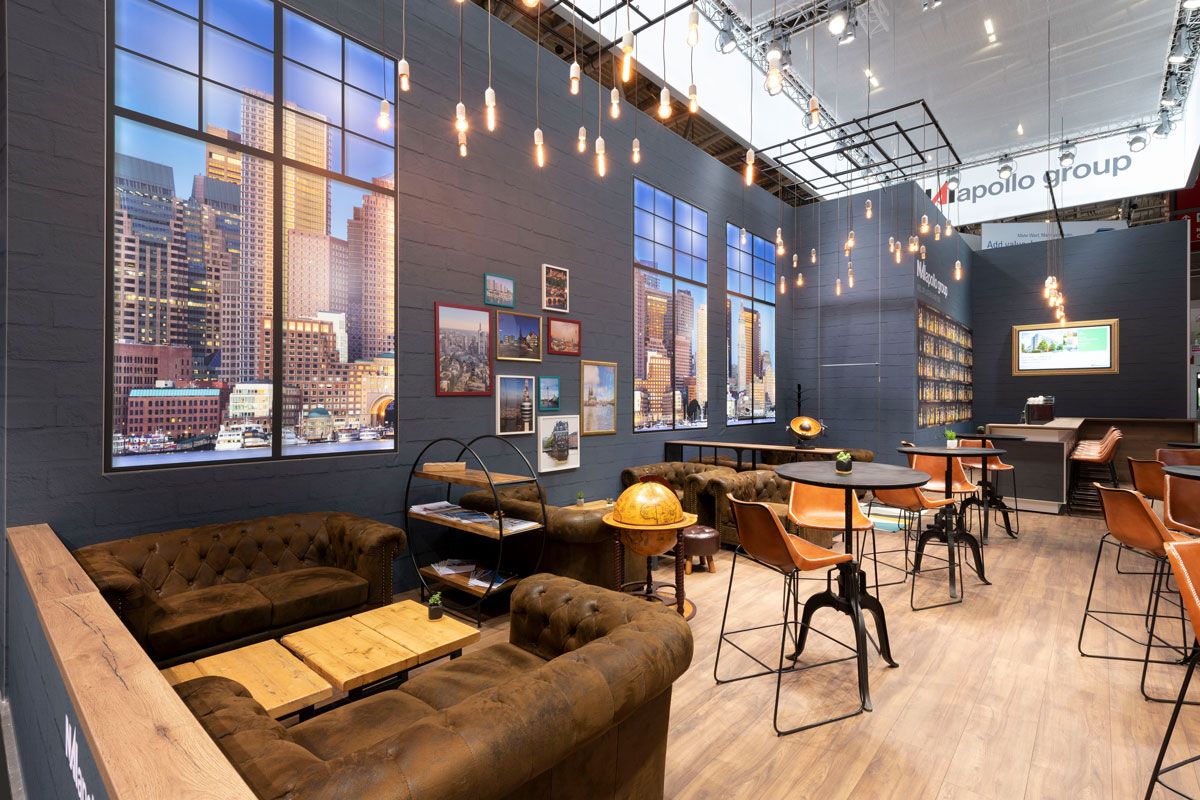Information and tips for events
Purposefully planned events are an effective marketing tool that can give the company more reach. This is because events make it possible to address...
3 min read
 Dr. Christian Coppeneur-Guelz
:
Friday, 6. December 2019
Dr. Christian Coppeneur-Guelz
:
Friday, 6. December 2019

Today, medium-sized companies and corporations work with well-known ERP systems such as SAP or Microsoft Dynamics. These ERP systems map all business processes and link them in a clever way. The purchasing process affects several stakeholders in the trade fair industry (marketing and event managers, accounting and suppliers).
To order an exhibition stand from the supplier, the marketing and event manager requests a stand from the stand builder. Based on a detailed briefing, the stand builder creates a concept including rendering and quotation. If the concept is acceptable, an order is created in the ERP system on the basis of the quotation and must be approved for ordering by a colleague with extensive authorisation in the ERP system. Using a unique order number, also known as a PO number or purchase order number, an order is placed with the supplier (stand builder) after internal approval. This in turn creates an order and notes this PO number in the order. After a successful trade fair, the invoice is issued. The PO number and the invoice amount can then be used by the accounting department to pay the outstanding invoice.
In theory, the process sounds simple and requires little effort.In reality, however, deviations can occur so that the process is disrupted and does not run through.This can have various causes:
This indifference is often accompanied by increased coordination and cost expenditure. Not to be neglected is the ‘annoyance’ that arises for both stakeholders.

If you use an ERM system (Event Management System), OCI interfaces (Open Catalogue Interface) can help.
OCI is a standardised catalogue interface for exchanging data records.
The best companies are successful in live communication because they organise customised and small events in addition to the classic image trade fair.
These are usually customised and score highly in terms of efficiency, which in turn leads to more leads. These can be congresses, conferences, HR trade fairs, order trade fairs, dealer trade fairs, open days and much more. As a rule, however, this increases the number of events for many companies to more than 50 events per year. By using an OCI interface, all orders in an external order portal are automatically imported into the ERP system. The items are configured correctly and also displayed in the billing process. The process is therefore more efficient in terms of time and interfaces.
The ordering process does not allow any deviations in ordering, order creation or invoicing. This means that the above-mentioned discrepancies cannot occur.
The shopping basket is already transferred to SAP and released for approval in the ‘higher’ instance. Obtaining a quotation, manual input or manual typing of the order is completely eliminated. As soon as the order has been approved, the generated PO is transferred to the external service provider.
The ERP system (e.g. SAP) is linked to an external shop using the OCI interface. To place an order, the user finds a link to the external shop. As the user does not have to leave the familiar SAP world, the usability is friendly and the shop system is not seen as another isolated solution. There is also no need to log in to another shop system.
An OCI interface is associated with one-off and ongoing costs. In addition to the one-off programming costs (approx. 3 man-days for both partners), the interface must be maintained. The monthly price is approx. 150-200 €. If the programming expertise is not available within the company, an external system integrator may have to be called in.
The costs for cancelling or crediting an incorrectly issued invoice amount to approx. 20-35 € per process error for corporate groups. As these costs are incurred by both stakeholders, an OCI interface amortises itself from as few as 10 process disruptions. We have not yet taken into account the costs incurred by other employees for checking and root cause analysis, etc.

The best thing is that the entire ordering process can be optimised and automated by connecting an OCI interface. The process throughput time is significantly reduced, which means that both companies benefit from a saving in working time. As the shopping basket automatically imports all parameters such as prices, articles and resources and there are no manual interfaces or transfers, the error rate is minimised and the process runs smoothly. There is no need for time-consuming credit notes and the creation of further orders. In terms of these advantages, the ordering process is significantly more efficient.
An OCI interface is particularly worthwhile for companies that work with an ERP system, that want to optimise their processes with a preferred partner and that order more frequently from this preferred partner. This is because the more frequently you order, the lower the order process costs per order.

Purposefully planned events are an effective marketing tool that can give the company more reach. This is because events make it possible to address...

After virtual events were put to the acid test during the coronavirus pandemic, organizers are now increasingly staging hybrid events. A hybrid event...

2022 is slowly coming to an end. Are you already planning your trade fair appearances for the coming year? Do you know what went well or not so well...